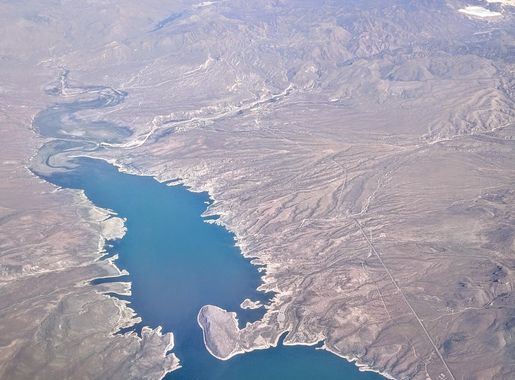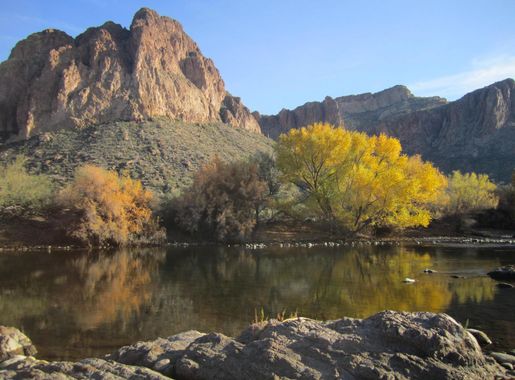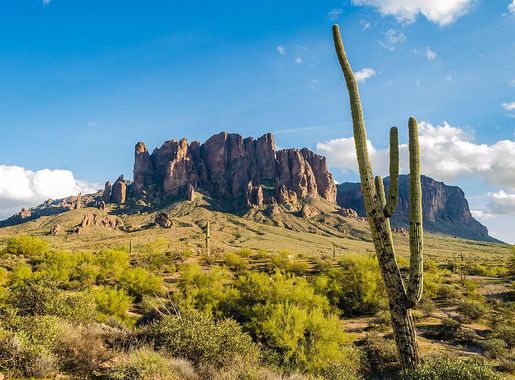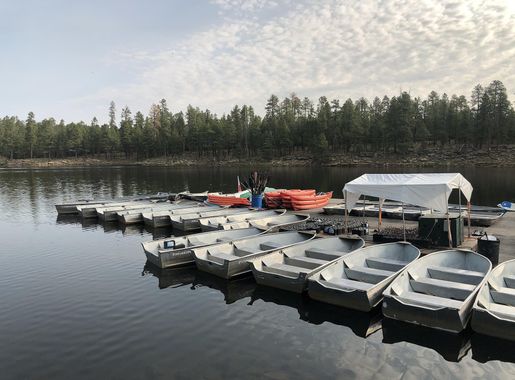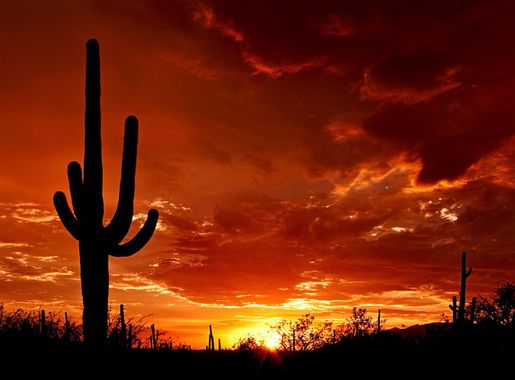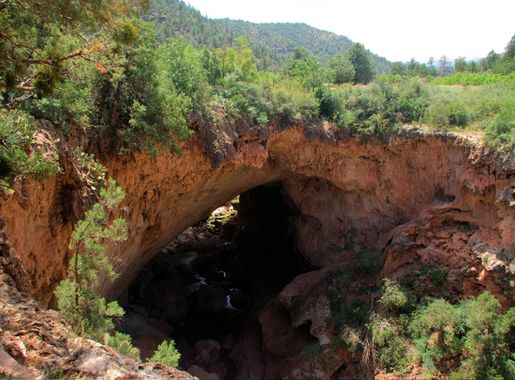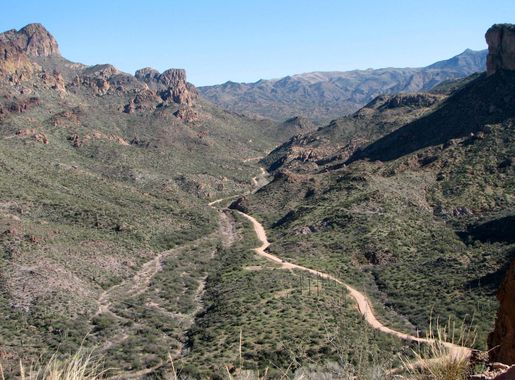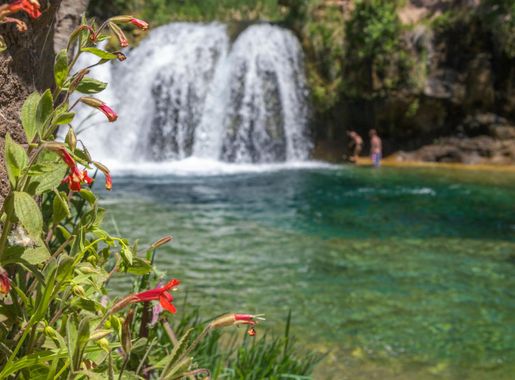
The Enchanting Wilderness of Tonto National Forest
Discover the diverse landscapes and rich cultural heritage of Tonto National Forest, where desert meets forest in the heart of Arizona.
Tonto National Forest, located in the heart of Arizona, is a mesmerizing blend of desert landscapes, towering pine forests, and crystal-clear lakes. Covering nearly 3 million acres, this forest offers a diverse range of outdoor activities that cater to both adventure seekers and nature enthusiasts alike. From hiking through rugged canyons to leisurely picnicking by serene lakes, Tonto National Forest promises an unforgettable experience for everyone. One of the highlights of Tonto National Forest is the Salt River, which winds its way through the forest, providing opportunities for rafting, kayaking, and fishing. The river is home to a variety of wildlife, including bald eagles, making it a perfect spot for birdwatching and photography. Additionally, the forest is dotted with historic sites, such as ancient Native American ruins and petroglyphs, offering a glimpse into the rich cultural heritage of the region. For those seeking breathtaking views, the Mogollon Rim offers panoramic vistas of the forest and beyond. This dramatic escarpment, which rises to over 2,000 feet, is a popular spot for camping, hiking, and stargazing. With its diverse ecosystems and stunning natural beauty, Tonto National Forest is a must-visit destination for anyone exploring Arizona.
Local tips in Tonto National Forest
- Visit in spring or fall for the best weather and fewer crowds.
- Bring plenty of water and sun protection, especially during summer months.
- Check for any fire restrictions before planning your trip.
- Explore the Salt River for water activities and wildlife sightings.
- Don't miss the scenic views from the Mogollon Rim.
- Consider a guided tour to learn about the area's history and natural features.
The Enchanting Wilderness of Tonto National Forest
Tonto National Forest, located in the heart of Arizona, is a mesmerizing blend of desert landscapes, towering pine forests, and crystal-clear lakes. Covering nearly 3 million acres, this forest offers a diverse range of outdoor activities that cater to both adventure seekers and nature enthusiasts alike. From hiking through rugged canyons to leisurely picnicking by serene lakes, Tonto National Forest promises an unforgettable experience for everyone. One of the highlights of Tonto National Forest is the Salt River, which winds its way through the forest, providing opportunities for rafting, kayaking, and fishing. The river is home to a variety of wildlife, including bald eagles, making it a perfect spot for birdwatching and photography. Additionally, the forest is dotted with historic sites, such as ancient Native American ruins and petroglyphs, offering a glimpse into the rich cultural heritage of the region. For those seeking breathtaking views, the Mogollon Rim offers panoramic vistas of the forest and beyond. This dramatic escarpment, which rises to over 2,000 feet, is a popular spot for camping, hiking, and stargazing. With its diverse ecosystems and stunning natural beauty, Tonto National Forest is a must-visit destination for anyone exploring Arizona.
When is the best time to go to Tonto National Forest?
Unmissable attractions to see
Goldfield Ghost Town and Mine Tours Inc.
Discover the Wild West at Goldfield Ghost Town - a thrilling tourist attraction in Apache Junction, Arizona, showcasing rich history and stunning mountain views.
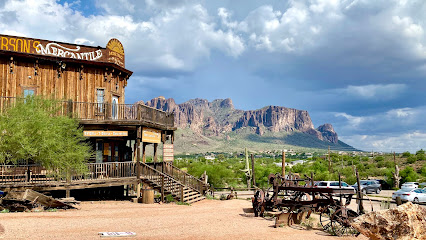
Tortilla Flat Saloon
Visit Tortilla Flat Saloon for a taste of Arizona's history, delicious food, and vibrant local culture in a charming Old West setting.
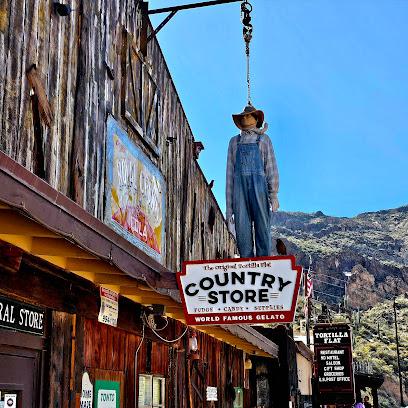
Usery Mountain Regional Park
Explore Usery Mountain Regional Park: A stunning desert paradise with scenic trails, wildlife, and breathtaking views in Mesa, Arizona.
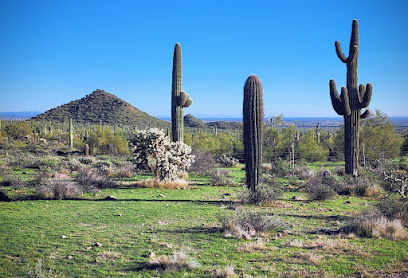
Tonto Natural Bridge State Park
Experience the breathtaking beauty of Tonto Natural Bridge State Park, Arizona's largest natural bridge, surrounded by stunning hiking trails and rich wildlife.
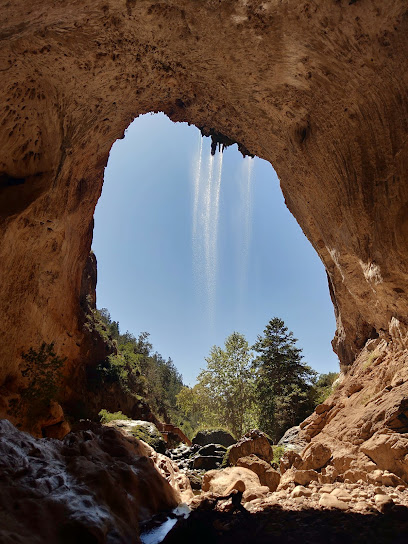
Casa Grande Ruins National Monument
Explore the ancient architectural marvels of Casa Grande Ruins National Monument, a historical site showcasing the lives of the Hohokam people in Arizona's stunning desert.
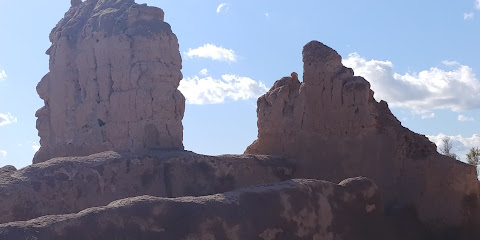
Tuzigoot National Monument
Discover the ancient ruins and breathtaking landscapes of Tuzigoot National Monument, a captivating glimpse into Arizona's rich cultural heritage.
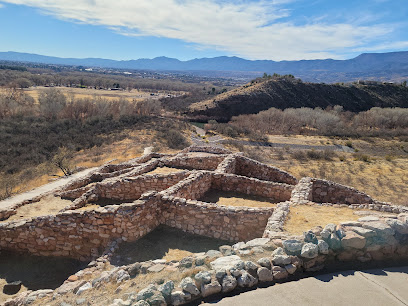
Navajo Point
Experience the breathtaking vistas of Navajo Point, a must-see viewpoint in the Grand Canyon, showcasing nature's beauty and geological wonders.
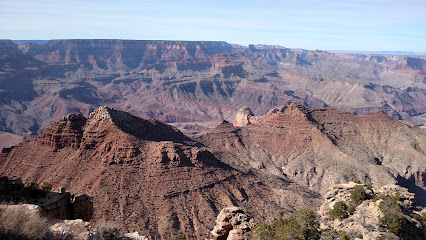
Superstition Mountain - Lost Dutchman Museum
Explore the legends and history of the American Southwest at the Superstition Mountain - Lost Dutchman Museum, a must-visit for travelers in Arizona.
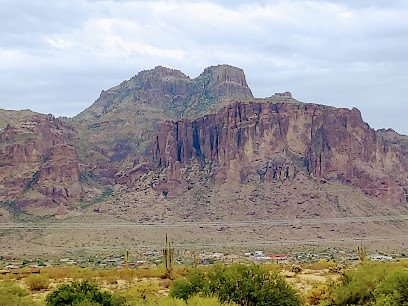
Butcher Jones Recreation Site
Explore the stunning Butcher Jones Recreation Site, a haven for outdoor enthusiasts, families, and nature lovers alike, nestled by the beautiful Saguaro Lake.
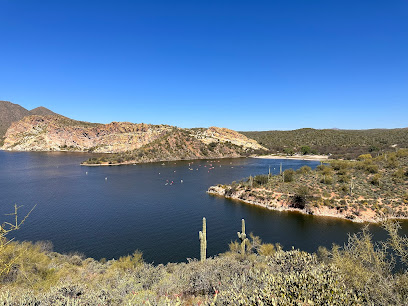
Phon D Sutton Recreation Area
Explore the stunning landscapes and vibrant wildlife at Phon D Sutton Recreation Area, a tranquil park in Mesa, Arizona.
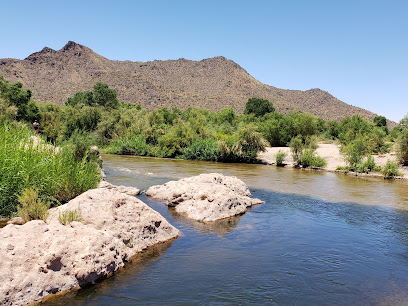
Pinnacle Peak Park
Discover Pinnacle Peak Park: A breathtaking natural escape in Scottsdale, Arizona, perfect for hiking, wildlife watching, and enjoying stunning desert views.
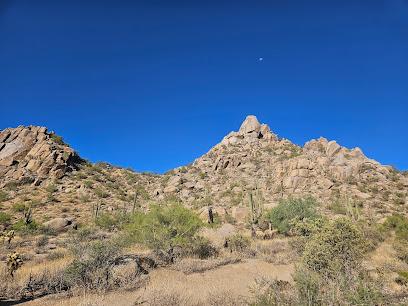
Frontier Town
Experience the charm of the Old West at Frontier Town in Cave Creek, Arizona, where history, entertainment, and shopping come alive.
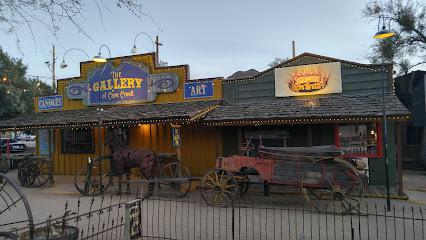
Water Users Recreation Site
Experience the beauty of Arizona at Water Users Recreation Site, where nature meets adventure in a serene setting perfect for all outdoor enthusiasts.
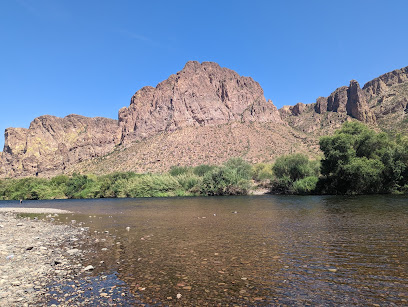
Montezuma Well
Explore Montezuma Well: A Historical Landmark with Stunning Natural Beauty and Rich Cultural Heritage in Arizona.
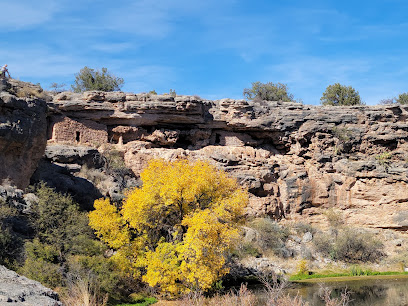
Tonto National Monument
Explore Tonto National Monument: A stunning journey into ancient Native American history amidst Arizona's breathtaking landscapes.
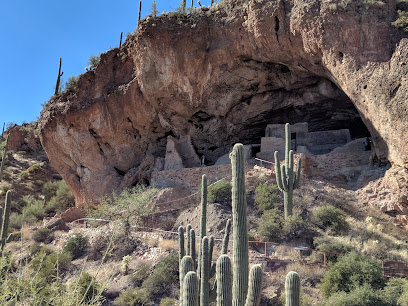
Markets, malls and hidden boutiques
The Shroom Room
Explore the unique offerings of The Shroom Room, a delightful gift shop and coffee haven in Payson, AZ, known for its mushroom-infused beverages and health products.
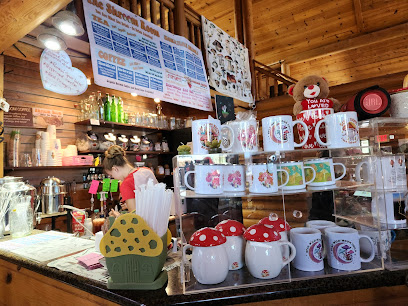
Serendipity A Unique Boutique
Explore the unique offerings at Serendipity A Unique Boutique in Payson, AZ, where eclectic gifts meet metaphysical supplies in a charming atmosphere.

Tonto National Forest
Discover the breathtaking landscapes and diverse wildlife of Tonto National Forest, a true gem of Arizona for nature lovers and outdoor enthusiasts.
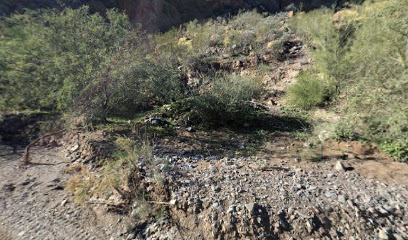
Consign Your Design
Discover unique women's fashion at Consign Your Design, a charming boutique in Payson, AZ, offering sustainable style and personalized service.

Turquoise Cowboy Gallery & Gifts
Explore the artistic heart of Tonto Basin at Turquoise Cowboy Gallery & Gifts, offering unique handcrafted items and local treasures.
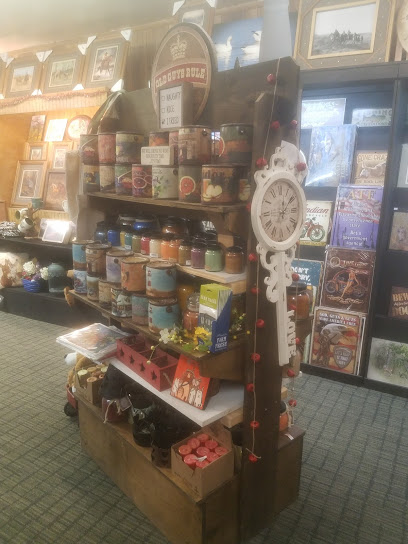
Scented Forest - Inside Sweet County Charm
Explore handcrafted beauty at Scented Forest, where natural ingredients and charming fragrances create an unforgettable shopping experience in Payson, AZ.
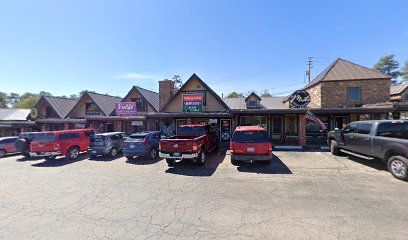
Essential bars & hidden hideouts
Buffalo Chip Saloon and Steakhouse
Experience the true taste of the Wild West at Buffalo Chip Saloon and Steakhouse in Cave Creek, AZ, featuring live music, delicious barbecue, and a vibrant atmosphere.
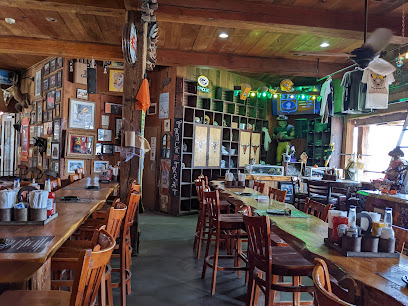
Tonto Natural Bridge State Park
Explore Tonto Natural Bridge State Park, Arizona's stunning natural wonder with breathtaking views, hiking trails, and unique geological formations.
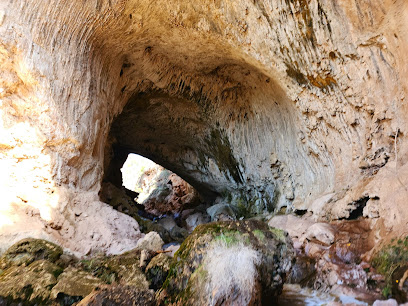
The Handlebar Pub and Grill
Discover the vibrant atmosphere and delicious menu at The Handlebar Pub and Grill in Apache Junction, Arizona, where local flavors come alive.
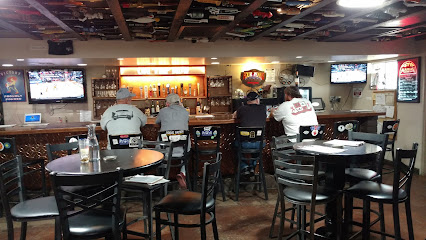
The Monastery
Discover The Monastery: A captivating grill and bar in Mesa, AZ, featuring delicious cuisine, lively beach volleyball, and an inviting atmosphere.
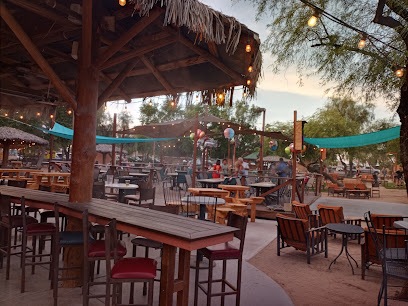
Dirtwater Springs
Experience the vibrant flavors of American cuisine at Dirtwater Springs, where family dining meets a lively bar atmosphere in Apache Junction.
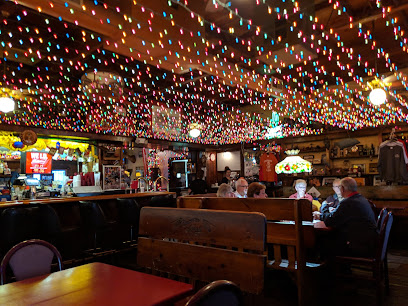
Local Legends Bar & Grill
Discover Local Legends Bar & Grill, where delicious breakfast meets hearty grill favorites in the heart of Mesa, Arizona.
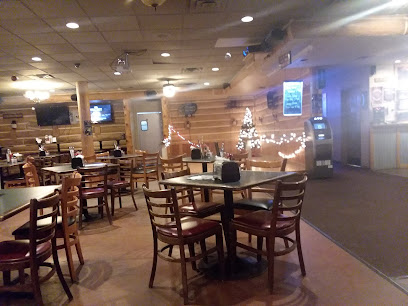
R.T. O'Sullivans Sports Grill
Discover the lively charm of R.T. O'Sullivans Sports Grill, a premier Irish pub offering delicious food, extensive drinks, and a festive sports atmosphere.
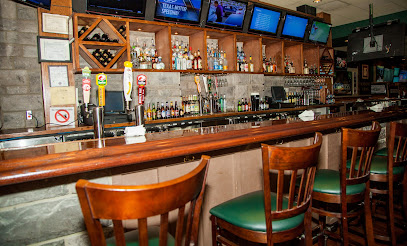
K O'Donnell's Sports Bar & Grill
Experience the vibrant atmosphere of K O'Donnell's Sports Bar & Grill, where American cuisine and sports meet in Scottsdale, AZ.

Rusty Spur Saloon
Discover the lively atmosphere at Rusty Spur Saloon in Scottsdale, where great drinks and live music come together for an unforgettable night out.
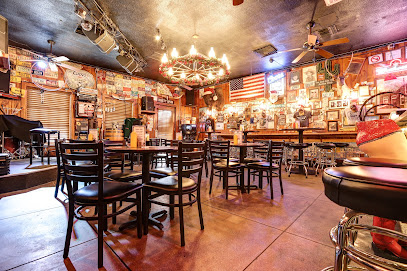
Tonto Bar & Grill
Experience the best of American and Southwestern cuisine at Tonto Bar & Grill, where flavor meets breathtaking views in Cave Creek, Arizona.
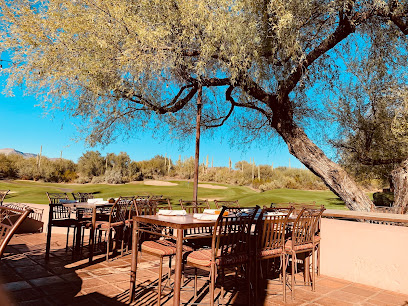
The Roadhouse
Experience the lively flavors of The Roadhouse in Cave Creek, AZ, where great food meets an inviting atmosphere.
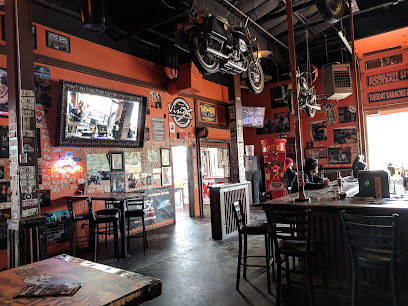
TC's Pub & Grub
Savor classic American cuisine and vibrant live music at TC's Pub & Grub, a favorite sports bar in Queen Creek, Arizona.

The Trough
Experience the vibrant flavors of The Trough, a lively grill and bar in Mesa, AZ, offering delicious food and an energetic atmosphere for all.
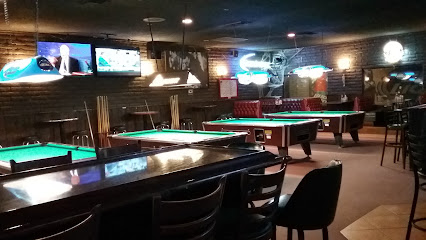
Coach House Entertainment
Discover the lively Coach House Entertainment in Scottsdale, a cocktail bar blending unique drinks with local arts and vibrant nightlife.
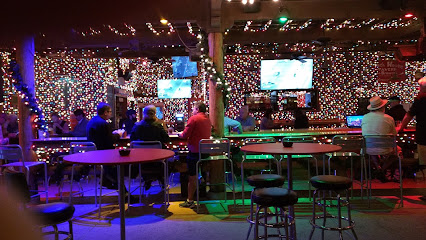
Beast of Bourbon Sports Bar and Grill
Discover the vibrant dining experience at Beast of Bourbon Sports Bar and Grill, where delicious American cuisine meets the excitement of live sports in Mesa, Arizona.

Local Phrases about Tonto National Forest
-
- HelloYa'at'eeh
[yah-ah-tay] - GoodbyeAdios
[ah-dee-ohs] - YesHaa
[hah] - NoDibé
[dee-bay] - Please/You're welcomeAhe'hee
[ah-hay-hee] - Thank youAhéhee'
[ah-hay-hay] - Excuse me/SorryWááshindoon
[wah-sheen-doon] - How are you?Kíímà
[kee-mah] - Fine. And you?Bíhííł
[bee-hee] - Do you speak English?Baa hózhǫ́ǫgo nízin?
[baa hoh-zhuhn-go nee-zeen] - I don't understandShíné
[shee-nay]
- HelloYa'at'eeh
-
- I'd like to see the menu, pleaseNaaltsoos bééhózin
[nahl-tsoos bay-ho-zin] - I don't eat meatNaanish dooleel
[nah-neesh doo-leel] - Cheers!Táá'ííł
[taa-ee] - I would like to pay, pleaseNihí
[nee-hee]
- I'd like to see the menu, pleaseNaaltsoos bééhózin
-
- Help!Áá
[ah-ah] - Go away!Doo nizhóní
[doo nee-zho-nee] - Call the Police!Bee'eldǫǫhtsoh bi'keh hózhǫ́
[bay-el-dohn-tsoh bee-keh hoh-zhuhn] - Call a doctor!Bee'eldǫǫhtsoh bi'keh hózhǫ́
[bay-el-dohn-tsoh bee-keh hoh-zhuhn] - I'm lostNaaltsoos bééhózin
[nahl-tsoos bay-ho-zin] - I'm illNaaltsoos bééhózin
[nahl-tsoos bay-ho-zin]
- Help!Áá
-
- I'd like to buy...Áko
[ah-ko] - I'm just lookingT'áá hwó'ají
[taa hwo-ah-jee] - How much is it?T'áá hwó'ají
[taa hwo-ah-jee] - That's too expensiveJííłáhí
[jee-la-hee] - Can you lower the price?T'áá hwó'ají
[taa hwo-ah-jee]
- I'd like to buy...Áko
-
- What time is it?At'ééd
[ah-tay] - It's one o'clockT'ááshchíín
[taa-shcheen] - Half past (10)Táálá
[taa-laa] - MorningT'ááshchíín
[taa-shcheen] - AfternoonT'ááshchíín
[taa-shcheen] - EveningT'ááshchíín
[taa-shcheen] - YesterdayT'ááshchíín
[taa-shcheen] - TodayT'ááshchíín
[taa-shcheen] - TomorrowT'ááshchíín
[taa-shcheen] - 1T'ááshchíín
[taa-shcheen] - 2Naaltsoos bééhózin
[nahl-tsoos bay-ho-zin] - 3Naaltsoos bééhózin
[nahl-tsoos bay-ho-zin] - 4Naaltsoos bééhózin
[nahl-tsoos bay-ho-zin] - 5Naaltsoos bééhózin
[nahl-tsoos bay-ho-zin] - 6Naaltsoos bééhózin
[nahl-tsoos bay-ho-zin] - 7Naaltsoos bééhózin
[nahl-tsoos bay-ho-zin] - 8Naaltsoos bééhózin
[nahl-tsoos bay-ho-zin] - 9Naaltsoos bééhózin
[nahl-tsoos bay-ho-zin] - 10Naaltsoos bééhózin
[nahl-tsoos bay-ho-zin]
- What time is it?At'ééd
-
- Where's a/the...?T'áá hwó'ají
[taa hwo-ah-jee] - What's the address?T'áá hwó'ají
[taa hwo-ah-jee] - Can you show me (on the map)?T'áá hwó'ají
[taa hwo-ah-jee] - When's the next (bus)?T'áá hwó'ají
[taa hwo-ah-jee] - A ticket (to ....)T'áá hwó'ají
[taa hwo-ah-jee]
- Where's a/the...?T'áá hwó'ají
History of Tonto National Forest
-
The Tonto National Forest area was once home to the Hohokam and Salado cultures, who thrived here between 300 and 1450 AD. The Hohokam were known for their impressive irrigation canals, which allowed them to sustain agriculture in the arid environment. The Salado people, who followed, are famous for their distinctive pottery and cliff dwellings, such as those found at the Tonto National Monument.
-
In the centuries following the decline of the Hohokam and Salado cultures, the Apache tribes began to inhabit the region. They were skilled hunters and gatherers, adept at living off the land. The Tonto Apache, a subgroup, were particularly prevalent in the area, and their name is now synonymous with the forest itself.
-
Spanish explorers arrived in the region in the 16th century, drawn by tales of gold and other riches. Francisco Vázquez de Coronado led an expedition through the area in 1540, in search of the mythical Seven Cities of Gold. Although they did not find the fabled cities, their journeys helped map the region for future explorers and settlers.
-
Tonto National Forest was established in 1905 by President Theodore Roosevelt, as part of his efforts to conserve and protect America's natural landscapes. The forest, spanning nearly 3 million acres, includes a diverse range of ecosystems, from desert to pine forests, and is one of the largest national forests in the United States.
-
Completed in 1911, the Roosevelt Dam was a monumental project that helped transform the Salt River Valley. It was part of the Salt River Project, which aimed to provide reliable water and electricity to the growing communities in the Phoenix area. The dam created Roosevelt Lake, which is now a popular recreational area within Tonto National Forest.
-
During the Great Depression, the Civilian Conservation Corps (CCC) played a significant role in developing Tonto National Forest. From 1933 to 1942, the CCC built roads, trails, and recreational facilities, many of which are still in use today. Their work helped make the forest more accessible to the public and laid the groundwork for its future as a recreational destination.
-
In the 1960s, Tonto National Forest became a significant location for civil rights activists. The forest served as a training ground for groups that were part of the larger civil rights movement, offering a secluded and natural environment for strategic planning and unity-building among activists.
-
In recent decades, Tonto National Forest has been the focus of numerous conservation efforts aimed at preserving its unique ecosystems and biodiversity. Initiatives have included habitat restoration projects, efforts to combat invasive species, and measures to protect endangered species such as the Arizona hedgehog cactus and the Mexican spotted owl.
Tonto National Forest Essentials
-
Tonto National Forest is located in central Arizona, U.S. The nearest major airport is Phoenix Sky Harbor International Airport (PHX), approximately 50 miles away. From Phoenix, you can rent a car or take a shuttle service to reach the forest. Driving is the most convenient option, and the journey typically takes about 1.5 hours via AZ-87 N or US-60 E.
-
The vast expanse of Tonto National Forest makes having a car essential for exploring. Rental cars are available at Phoenix Sky Harbor International Airport. While there are some shuttle services and tour operators, personal transportation allows for greater flexibility. Be prepared for varying road conditions, especially if you venture onto unpaved roads.
-
The official currency is the United States Dollar (USD). Credit and debit cards are widely accepted in most areas, including gas stations, restaurants, and shops. However, it's wise to carry some cash, especially for smaller establishments or remote areas where card readers may not be available. ATMs can be found in larger towns like Payson and Globe.
-
Tonto National Forest is generally safe for tourists. However, standard precautions should be taken. Avoid leaving valuables in your car and be mindful of your surroundings. Certain urban areas in Phoenix and Mesa have higher crime rates, so exercise caution if traveling through these regions. Be aware of wildlife and natural hazards like snakes and extreme weather conditions.
-
In case of emergency, dial 911. The forest is vast and remote in places, so it’s crucial to have a charged mobile phone and a map. Emergency services can be contacted for medical emergencies or if you get lost. Carry a first-aid kit and inform someone of your itinerary. Ranger stations and visitor centers can offer assistance and information.
-
Fashion: Do wear comfortable and weather-appropriate clothing, including hiking boots. Don’t forget hats and sunblock. Religion: Respect Native American sites and traditions. Public Transport: Public transportation is limited; do rent a car. Don't rely solely on ride-sharing services. Greetings: A friendly 'hello' or 'hi' is common. Eating & Drinking: Do try local Southwestern cuisine. Don’t litter; always pack out what you pack in.
-
To experience Tonto National Forest like a local, visit lesser-known trails and natural springs. Engage with park rangers and volunteers who can provide insider tips. Explore the Apache Trail for scenic drives and visit Roosevelt Lake for water activities. Pack a picnic and enjoy the stunning landscapes away from the more frequented tourist areas.
Nearby Cities to Tonto National Forest
-
Things To Do in Mesa
-
Things To Do in Gilbert
-
Things To Do in Tempe
-
Things To Do in Chandler
-
Things To Do in Phoenix
-
Things To Do in Sedona
-
Things To Do in Prescott
-
Things To Do in Winslow
-
Things To Do in Flagstaff
-
Things To Do in Tucson
-
Things To Do in Grand Canyon Village
-
Things To Do in Lake Havasu City
-
Things To Do in Kingman
-
Things To Do in Bisbee
-
Things To Do in Gallup


